It’s no secret that Chiang Mai has been a popular destination for several generations of tourists and expats. With its hundreds of golden temples, a wide variety of international restaurants, stunning surrounding countryside, and a large choice of outdoor activities, this northern Thai city has something to offer everyone. And the year-round tropical climate is an added bonus.
Chiang Mai offers all the amenities of a large city at small town prices. Good quality rentals are easy to find to fit any modest budget in both the center of town, outer suburbs, and in the nearby rural areas. Fresh markets scattered throughout the city offer locally grown fruits and vegetables along with a variety of prepared dishes for as little as $1.30 apiece. Those who seek foods that are more familiar can find a wide selection of imported goods at any of the large supermarkets in town. A growing number of bakeries offering sourdough, raisin, and multigrain breads have also pleased local expats.
Five large modern malls cater to the shopaholics in the area. They each include a large modern cineplex where you can view all the latest blockbusters for as little as $3.30. And to further highlight how sophisticated this relaxed city is, you can order your tickets online ahead of time if you so please. Plaza retailers include a good mixture of local shops and international brand names. It is not hard to find most items you are looking for in this cosmopolitan center.
Thailand has always been known for its excellent healthcare and Chiang Mai is no exception. A variety of public and private hospitals cater to the population with well-trained doctors and nurses, many of whom speak English. It is interesting to note that you will find many doctors in Chiang Mai who have trained in western countries. A consultation with a specialist rarely costs more than $25 and most medical procedures are available at far less expense than in the U.S.
Some expats prefer to live along trendy Nimmanhemin Road, with its upscale condos and eateries, designer boutiques, and popular bars. Others prefer being in or near the old gated city. But for many, living in the nearby countryside is the ultimate retirement lifestyle. There, they can have a big garden, grow their own fruits and vegetables, and often have a spectacular view of the nearby mountains. This city does not feel congested and overcrowded in any way.
Getting out of town is not difficult. The Chiang Mai International Airport is located 10 minutes from the center of the city and has scheduled flights to Bangkok, Singapore, China, Vietnam, Taiwan, Myanmar, Korea, and Laos.
Chiang Mai has always been known as one of the main cultural hubs of Thailand. This coupled with the fact that it is a university town, results in many art and cultural displays throughout the year both at local galleries and at the large number of annual festivals. The more than 30,000 expats in the city have given rise to an active expat club that holds monthly meetings. It also acts as the conduit for many local interest groups that meet regularly, to partake in everything from hiking to computers to photography.
About the only thing lacking in Chiang Mai is the beach. However, for way less than a hundred dollars and a two-hour plane ride, you can be sitting on one of several beaches in the southern part of the country sipping your cocktail.
It is easy to live in Chiang Mai on a budget of $2,000 per month. The great part is that not only is it an inexpensive lifestyle, it is also a high-quality one.
Retire in Chiang Mai, Thailand
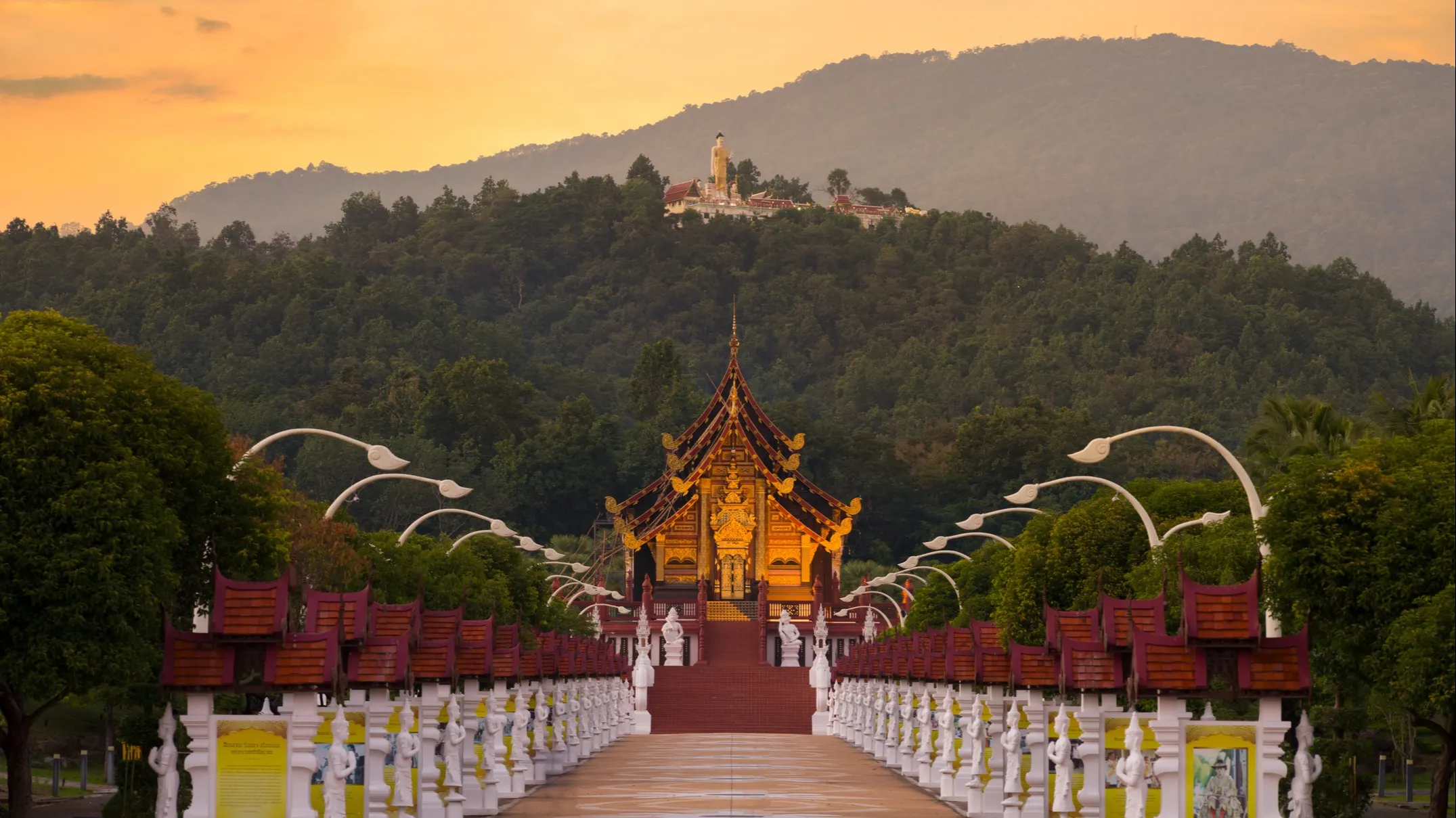
The “Rose of the North” has been a prime backpacker destination for several decades. Today, the northern city of Chiang Mai continues to attract tourists from around the world as well as thousands of foreigners looking for a warm, economical retirement destination. An emerging group of young ‘digital nomads’ add an energy to the community and often mix with more seasoned expats at events.
Thailand remains one of the top 10 countries to retire abroad, receiving high scores over the past few years in International Living’s Annual Global Retirement Index—most notably for its top-notch healthcare, inexpensive housing, and friendly residents. And Chiang Mai is one of the most popular areas of the country to settle down.
Glitzy malls, a local theatre group, and wonderful restaurants all contribute to a great lifestyle for local expats. Whether you choose a modern condo in the center of town or a spacious house in the beautiful surrounding countryside, you will be surprised at the low monthly rental costs.
You may be surprised at the modern attributes of the new condos in Chiang Mai. Contemporary kitchens and bathrooms are the norm for newly build condos. Most have swimming pools and gyms for its tenants to use at their leisure.
If you love the outdoors, there are several national parks within easy driving distance. Take a drive along one of the many scenic country roads or cool off in a cascading mountain stream. The highest mountain in Thailand is a short drive away and offers spectacular vistas of the jungles and valleys below.
Slowly being immersed into Northern Thai culture, known as ‘Lanna’, is a special treat. If you live near the city, you will no doubt be a stone’s throw away from the ruins of an ancient temple. In fact, around nearly every corner is a reminder of a rich and colorful history. It is still possible to see many ancient practises today; however, you will be just as likely to see Buddhist Monks playing on their mobile phones.
With its many colorful annual festivals, spectacular scenery, and inexpensive cost of living, Chiang Mai could be the ideal retirement destination you are looking for.
Lifestyle in Chiang Mai, Thailand
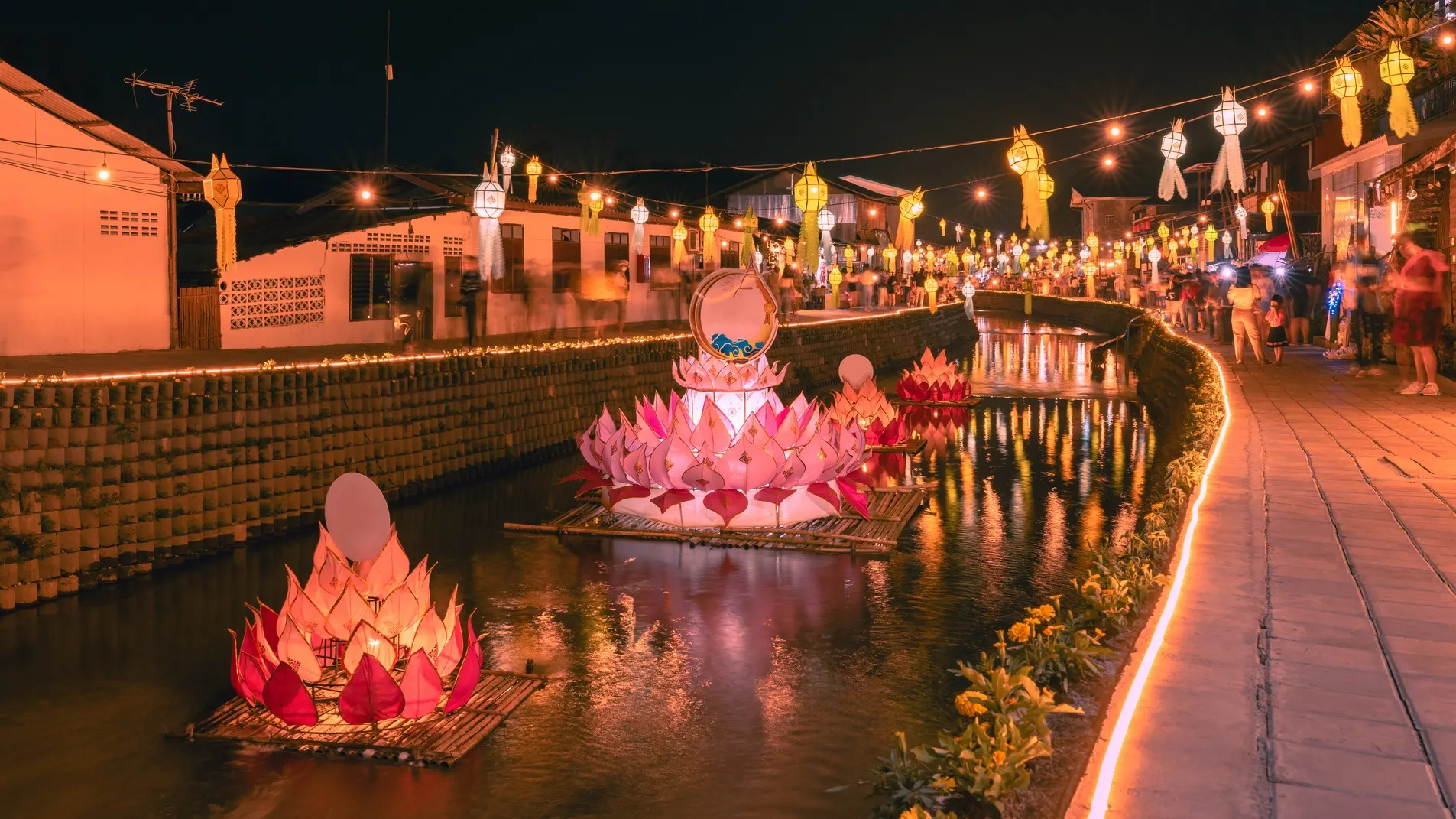
Want to wear your shorts and a t-shirt every day? Then Chiang Mai is the place to be. With its year-round warm climate, there is no need for much else except a bathing suit. It does get a little chilly in the winter months at night but still reaches the balmy 80s F during the day. Dress is casual in Chiang Mai and due to the heat, smart casual is all that is needed for dinner events.
Live in the center of the city and enjoy all it has to offer. You can shop at the local markets and pick up fresh fruits and veggies for bargain prices. Markets throughout the city offer hand-made clothing, furniture, and day-to-day items for a fraction of what you would pay at home.
When the sun goes down, there is no shortage of places to gather with friends. Dine at one of the hundreds of wonderful restaurants or sit back and relax at one of the live music venues in the city. Pick up a tasty dish from one of the hundreds of street vendors for as little as a $1.50 and visit with neighbors in one of the many outdoor dining areas.
Textiles, gold, silver, and ceramics are only some of the items that are showcased on a regular basis in galleries around town. Many cultural events happen throughout the year where expats and local Thais work together in the community. With over thirty thousand expats living in the Northern Thailand, it is not hard to find others with the same interests as you. There are literally hundreds of meet ups and events for expats that run each month.
Chiang Mai may not be as laidback as it was 50 years ago but the lifestyle is still attractive and much slower the hectic schedules many of us are used to. With the great climate, good shopping, excellent healthcare, and friendly locals, it may be a great fit for your retirement years.
Climate in Chiang Mai, Thailand
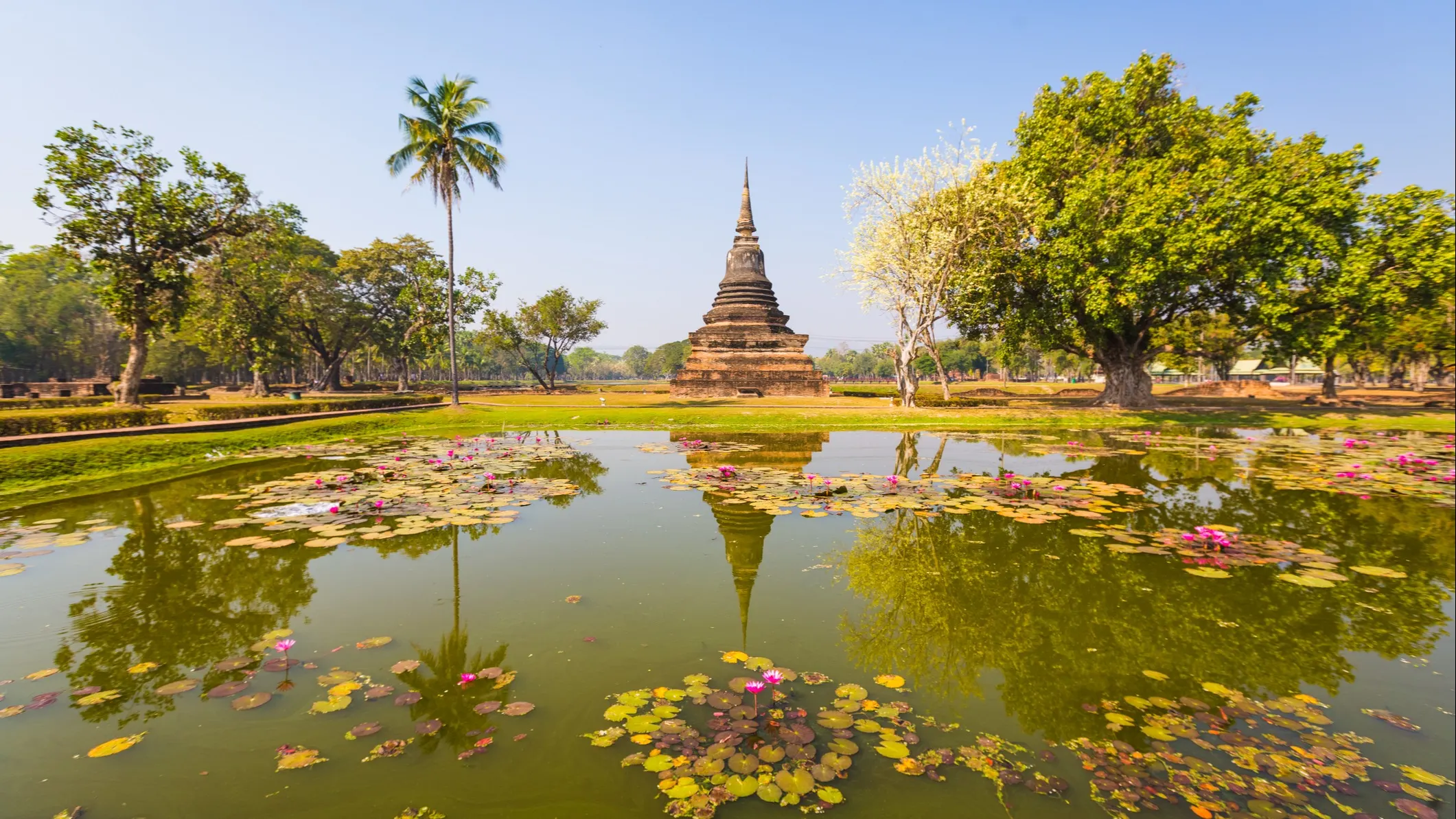
As in most of Thailand, Chiang Mai varies from hot to hotter for most of the year. It is a tropical wet and dry climate, but during the ‘Winter’ season, the nights can be quite cool compared to the daytime. This is one of the many reasons that expats prefer living in the northern part of the country.
The nicest time of the year is the dry season that generally lasts from November to February. As the rainy season comes to an end in November, the cloudy days and scattered thundershowers slowly give way to bright sunshine and clear skies for the winter months. Daytime highs still reach into the 80s F and 90s F but you might have to bundle up at night.
Although air conditioning is the norm for most condos, heating is unheard of for the most part. Winter nighttime temperatures are much cooler than points further south. Lows can dip below 60 F and sometimes even into the 40s. The record low for January is 33 F so be prepared.
As spring arrives, daytime temperatures increase to a maximum in April, when they can squeeze past 100 F on a regular basis. Fortunately, the world-famous Songkran festival also arrives at the beginning of the month that gives everyone the opportunity to be cooled down by the copious amounts of water splashed about for several days.
Residents look forward to the arrival of the monsoon season sometime in April or May—a relief from the excessive heat and humidity of the past few months. During a normal year, rainfall increases monthly until it reaches a maximum in August or September. But continuous rainfall and perpetual gray days are unusual. More typically, towering storm clouds build during the heat of the day and burst into torrential sporadic downpours late in the afternoon, which can last anywhere from a few minutes to an hour. It is unusual not to be able to get out and about at some point during the day.
By November, the rainy days begin to diminish and the annual cycle begins again as the climate becomes cooler and drier.
Cost of living in Chiang Mai
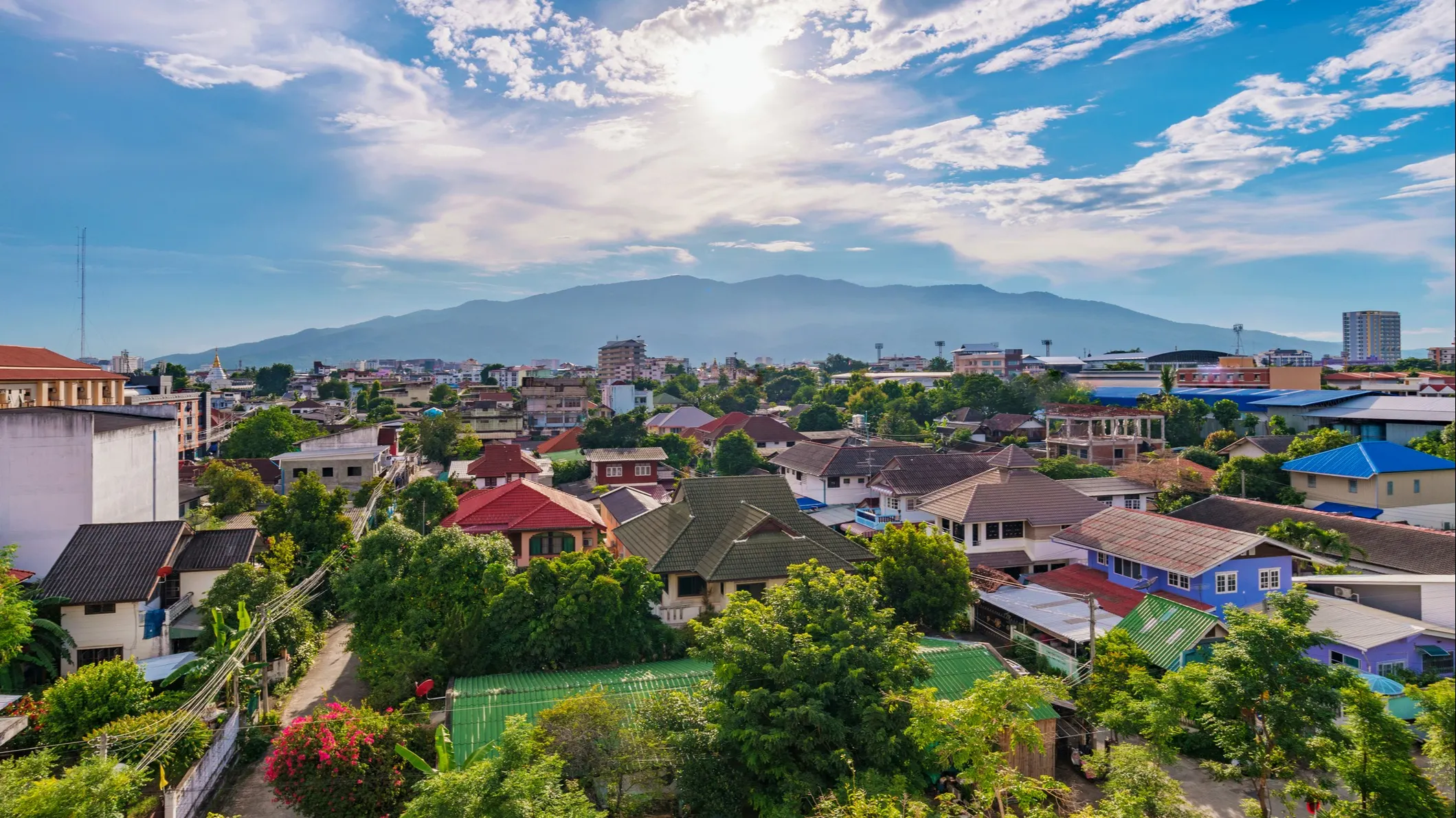
With five vast Western-style shopping centers—including cinemas, ice rinks, theatres, hairdressers, well-stocked supermarkets, inexpensive food courts, and even cosmetic surgeons—you can get nearly anything you need. Like anywhere in Thailand, buying imported products is more expensive.
Chiang Mai offers a fantastic lifestyle. People looking for a healthy lifestyle can access gyms for as little as $28 per month.
Real estate prices are incredibly attractive. Depending on where you want to live, you can buy a 1600-square-foot house from about $83,000 or rent a modern studio apartment for as little as $253 a month.
Here’s an example of a monthly budget for a couple living in Chiang Mai:
| Expense | U.S. $ |
|---|---|
| Rent (two-bedroom house) | $496 |
| Electricity | $105 |
| Gas & Water | $7 |
| Cell Phones (x2) | $30 |
| Groceries & Household Items | $120 |
| Insurance | $150 |
| Internet | $19 |
| Streaming Media Accounts | $45 |
| Taxis, Buses | $40 |
| Property Tax | $2 |
| Dining Out | $150 |
| Monthly total: | $1,164 |
5 Most Popular Expat Hangouts in Chiang Mai
By Rachel Devlin

Expats are scattered throughout Chiang Mai so there are no real big expat hangouts. They will be in golf clubs, fancy hotel dining rooms, western-style shopping centers, food courts, and gyms throughout Chiang Mai.
But in saying that, there are places that are good to visit, especially if you are new to Chiang Mai. These are the predictable places that expats pop into from time to time, about five minutes outside the city.
Cheap as Chips and Family Friendly
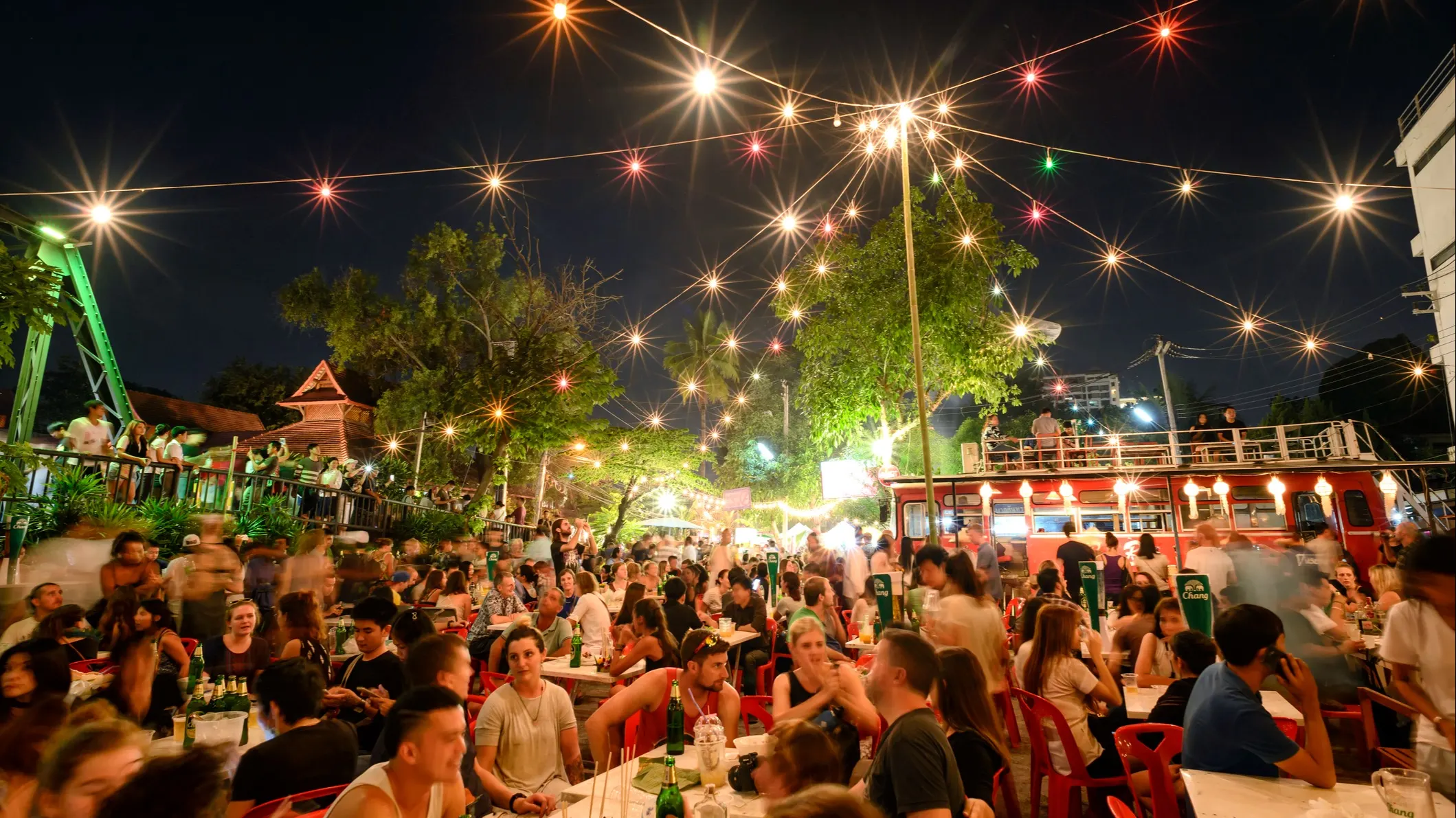
The Gekko Garden Pub and Restaurant has been a meeting point for expats for at least 16 years. It is famous for being the cheapest place to buy western-style meals and also has a reputation for its large portion sizes. The menu is enormous and a 10-inch pizza with two toppings will only set you back $5. The “Gekko” is owned by a lovely American named Rudi, so you can be guaranteed a turkey on Thanksgiving, BBQ ribs on Saturdays, and a big roast meat buffet every Sunday night. You may see expats around the bar drinking the cheapest beer in town or families seated at the many tables. The restaurant is also perfect for expats with Thai partners as the menu offers a large selection of local food. It has a loyal customer base, so if you visit regularly, you will begin to meet people and become a part of the community in no time.
Often expats swing by the “Gekko” for a coffee and slice of pie on the guise of asking Rudi questions on where to buy hard to source items. He knows where to find everything a new expat would ever need.
Life-Long Learning

If you are interested in learning all about your new country as well as meet other like-minded people, Life Long Learning at Payap University host lots of fascinating virtual and non-virtual events.
Learn about Thai history, local archaeology, astronomy, develop your artistic side with sketching, or go on excursions to other provinces with an expert. These tours offer more than just the tourist guide version of events. If you are in your home country and are keen to explore more, sign up for their newsletter on their website. You may get the chance to learn about the real Chiang Mai before you come.
Nimmanhaemin Road
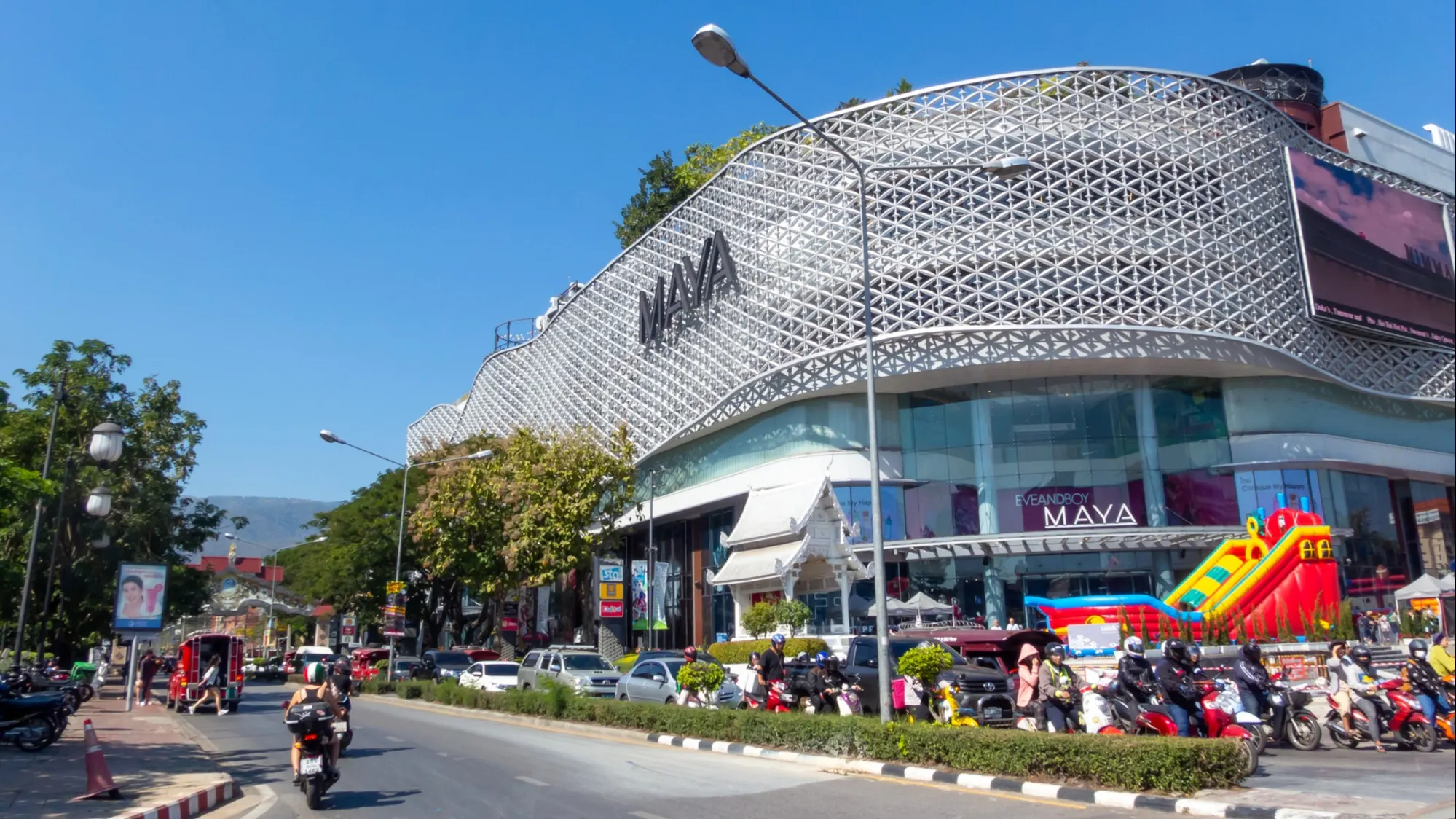
This is not a specific location but many new expats end up living near or on Nimmanhaeman Road. Sometimes it is referred to as “Nimman” when describing the general area, although this is not an official place name. This area is a good place to move to get settled in mainly because many expats need time to work out their transportation. Nimmanhaeman Road has many restaurants so food is close and there is a major shopping center, Maya, at one end of the road where you can access groceries, and other necessities. Maya also has a movie theatre and is not too far from some great hiking trails.
As expats gain more experience and sort their preferred mode of transportation they tend to move to areas around the city that have cheaper rents and offer more space. Some choose to move into suburbs such as Hang Dong. Certainly, in the morning you will see many expats leisurely eating brunch at the well-known Smoothie Blues restaurant. Bagels and eggs benedict are on the menu and it honestly has the most magical fruit smoothies in all of Chiang Mai.
Friendly and Sports Orientated

Krusty’s Bar and Grill is a sweet little place down a narrow soi (side street) south of the old city. It hosts sports events on multiple televisions. Joe, the Canadian owner, makes sure that all the main sports events are covered, whether you are from America, England or Australia, you are sure to see your favorite team play. The large pool room and weekly pool competition is also a crowd-pleaser.
The locals here are friendly so if you come down you are sure to get chatting to someone sitting close by. This is an eclectic crowd offering eccentric and lively conversations. During grand finals, Joe graciously serves free finger food to enjoy with your beer or cocktail.
His menu is also a mixture of Thai and Western cuisine. You can savor some chili con carne for $6.50 or feel the heat with a stir fry chicken with basil for just $2.30. Everyone ends up a winner at Krusty’s.
Big Events and Networking

The Chiang Mai Expat club has a large membership. Usually, but not at present due to COVID-19, there is a large monthly meeting where speakers inform expats on all thing’s expat. New visa rules, health insurance and local events to name a few. The club has sponsors that set up tables so you can chat to them about useful services. These include Bangkok Hospital, visa agents, and local charity organizations.
The expat club also runs a breakfast twice a month at a local western style restaurant. This is a great place to meet people, make friends, and ask questions.
There are also a variety of local interest groups that you can source from the expat website, so it is worth a look.
The Takeaway
Once you find the groups you are interested in, you will find that you all meet up in different places. This is a great idea as it broadens your knowledge base of the area and places to visit.
Personally, I have made the best friends simply swimming in my condo swimming pool and other local pools.
So, whatever you do when you arrive, make sure you dive in!
3 Getaways From Chiang Mai
By Rachel Devlin
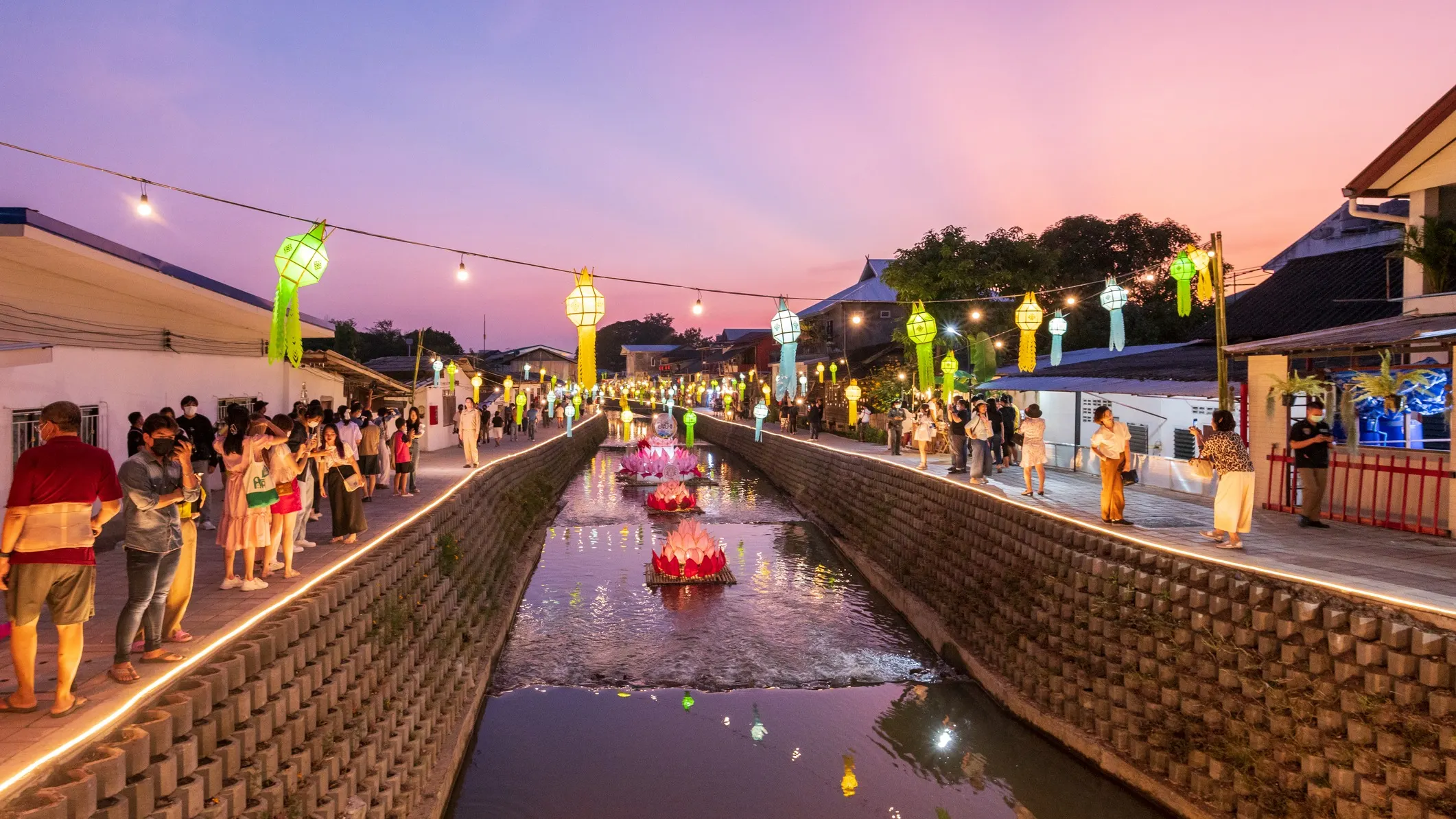
I have lived in Chiang Mai for several years but it wasn’t until I was forced to really look, did I discover that local travel around Chiang Mai is not only plentiful but completely charming. So here are my three favorite experiences so far.
Endless Rice Fields with a Traditional Touch
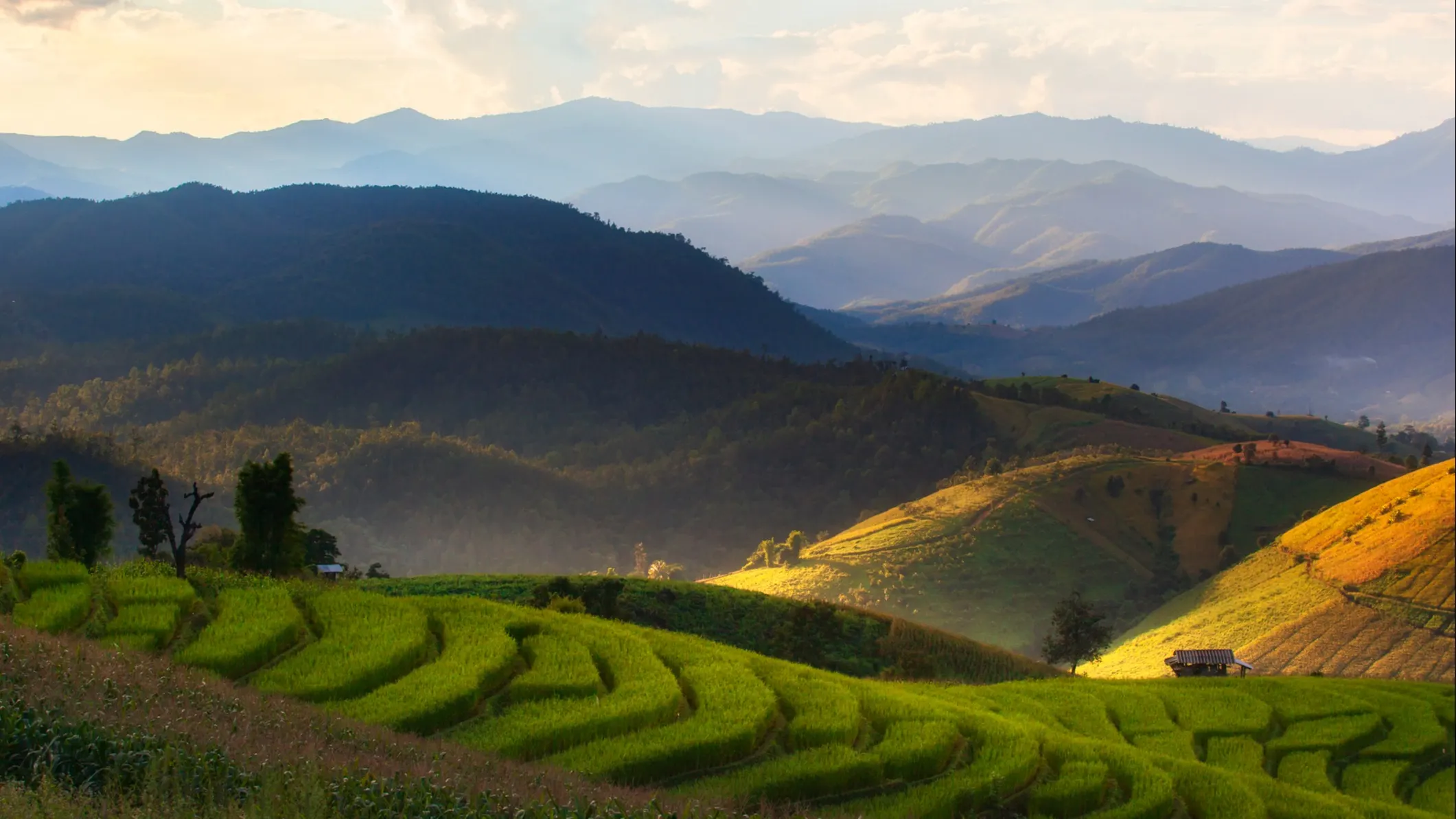
Leaving North from Chiang Mai, it is a short 35-minute drive to a district called Mae Thaeng. This place is completely undervalued, particularly if you need some peace, but still a hop, skip, and a jump to civilization if you forgot your phone charger. Mae Thaeng is semi-rural and there are a variety of tranquil homestays and B&B’s to discover.
During a random drive I followed some signs that said “Farm Café.” What a delightful discovery. Farm café overlooked their own organic farm and the menu offered a delicious vegan menu. For less than $5 I ate a wondrous faux pork and rice dish and tested a vegetable red curry that was complex and spicy in flavor.
This café was actually a part of a homestay that is owned by antique art dealers. The tour of the wonderful small houses and Lanna style structures, which are available to rent, were decorated with antique art from India, Burma, Japan, and Thailand. Each room provides a bold visual aesthetic in a stylish, almost understated way. All of the art was for sale. My Lanna house on stilts was only $16 per night, but typically that increases during tourist season.
There were pavilions (salas) to do yoga, grand views of natural beauty, gardens with sculpture, a lake with ducklings paddling, and a clear emphasis on health and wellbeing. It was bliss.
Nearby you will find a variety of interesting temples, some of which have old murals that are not only precious to the locals, they are stunning to explore. They give glimpses into what local life was like in the area hundreds of years ago. Wat Takham (or Wat Tha Kham) contains murals, although faded of market scenes, rural life, and even a scene at the hairdressers. The monks explained that the pictures are only in three colors because some pigments have just faded away over time, which they estimate are at least 400 years old.
Mountain Magic, Caves, and Some Fine Dining

If you continue north past Mae Thaeng, you will eventually see signs to Chiang Dao. This happens to be a very popular place for both expats and Thais who are looking for a short getaway from the city. It is only a one-and-half hour drive on good quality roads with pretty scenery of farms and mountains in the distance.
Once you turn off the highway (at the courthouse intersection) follow the road and prepare for a spectacular view of the luscious mountain, it is a moment of sweet awe, especially in the wet season.
The Chaing Dao Caves is an interesting little spot. It has temples, a variety of sculptures, a large pond to feed the fish, and caves to explore, note that the caves are consecrated and are also considered a place of worship. You need to pay a guide to go further than the first cave, which will set the adventurous back about $4. These tours are not for people who suffer from claustrophobia.
Many enjoy the 500 steps up the mountain to Wat Thum Pha Plong (which is only a few hundred meters from the cave). This is a very pleasant workout with Buddhist messages on trees as you climb, and signs of encouragement too. At the halfway point there is a little first aid cupboard in case of minor injuries or the need for the Thai version of smelling salts.
When you have reached your vertical victory, you will find yourself in a cavern that is also a Buddhist temple. Some go to meditate here, but not far from this temple is the most serene, scenic temple called, Wat Tham Pakpiang. This is also a very old temple and houses monks in little bamboo houses on stilts in a garden of wild jungle. The viharn (main building of worship) is very old and a perfect place for meditation. The temple grounds also have two caves that also contain Buddha images. This place has a very special, tranquil atmosphere.
There is a plethora of places to stay with budgets as low as $10 per night to $100. Most are on the rustic side, but the views are a complete bargain!
Top Tip: Chiang Dao Nest 1 and Chiang Dao Nest 2 are two hotels that offer fantastic food. One place offers Thai cuisine, the latter western food. You will need to book as these restaurants are extremely popular.
Possibly Chiang Mai’s Best Kept Secret
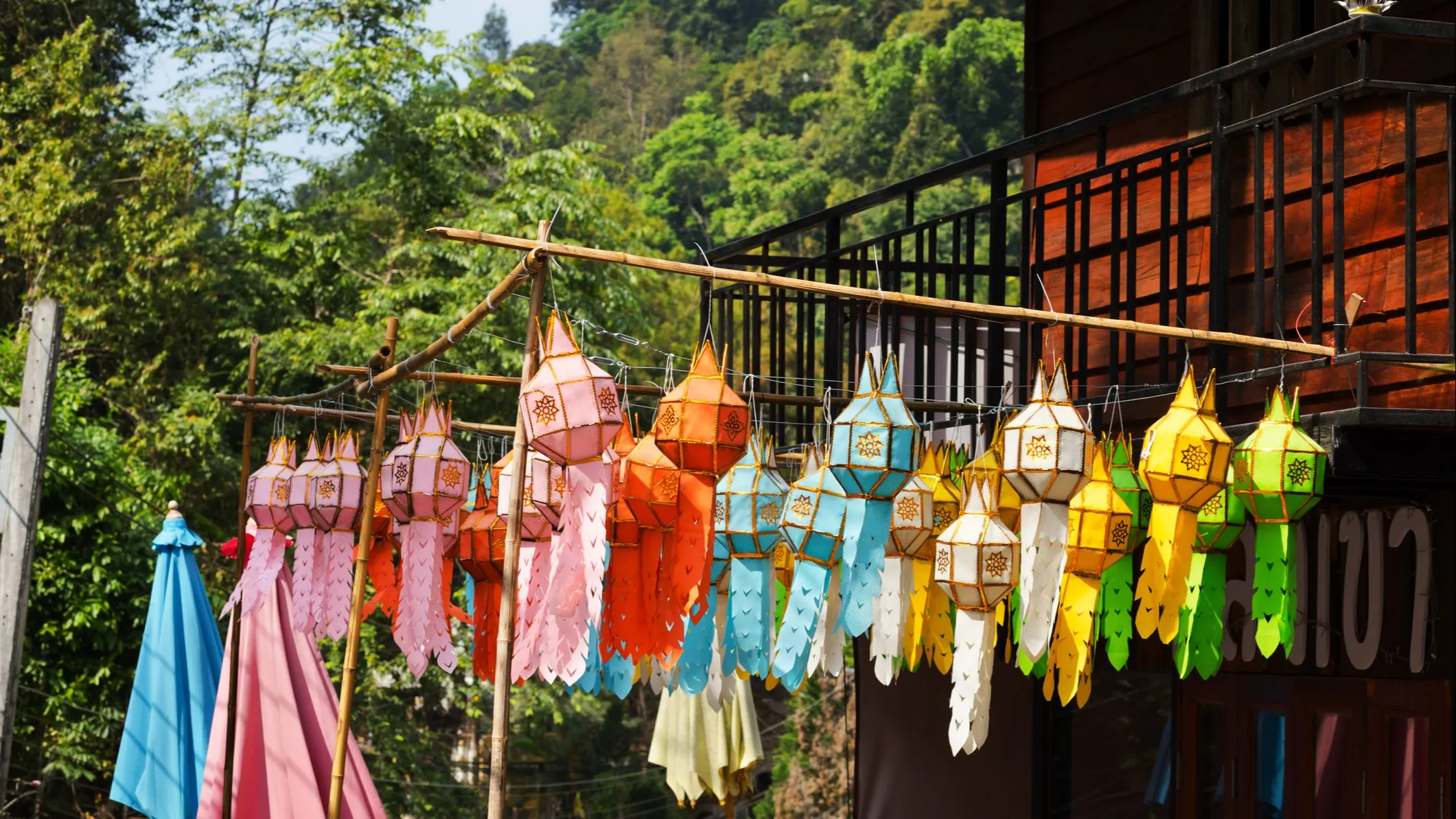
Mae Kampong is just over an hour’s drive from Chiang Mai heading East. Eventually the expansive highway thins and winds its way up a modest mountain. Although Mae Kampong is completely captivating, it is not well known, except for the Thai people, who love to escape there.
Mae Kampong is structurally and visually very different from most other towns. It centers on a thin mountain road where there are wooden houses, homestays, and hotels on stilts over a cool and lively brook that babbles underneath the buildings with the jungle as a green backdrop.
Most hotels have pontoons and balconies with hammocks and comfy chairs so that guests can leisurely read and relax to a cacophony of wildlife. Small cafes line the road and this encourages pleasant strolls along the curvy mountain road to find the place with just the right quirkiness for your own measure.
Stop by the Museum of Villager-Forrest-Miang (one of the few signs in English) to visit a small temple on the water and cross the road to trek up an old pathway that hugs the face of the steep mountainside to find visual surprises like meditation huts, small chedis and images of the Buddha. It is a labyrinth with a faded wooden map hanging from a tree inviting you to take the quest. This place is really like no other in Thailand! Camping is probably the cheapest option but this area offers some high-end luxury accommodation as well. Prices range from $20 per night to $200 per night.









